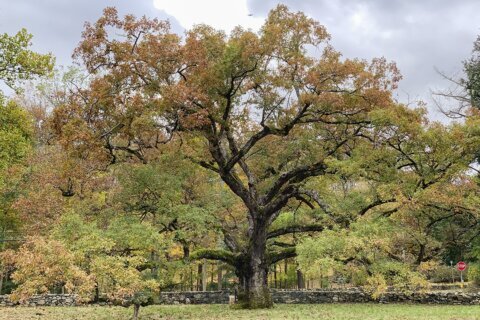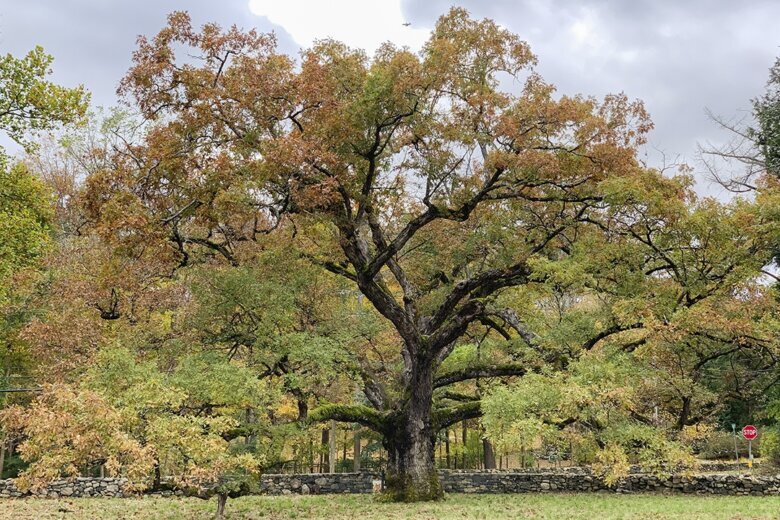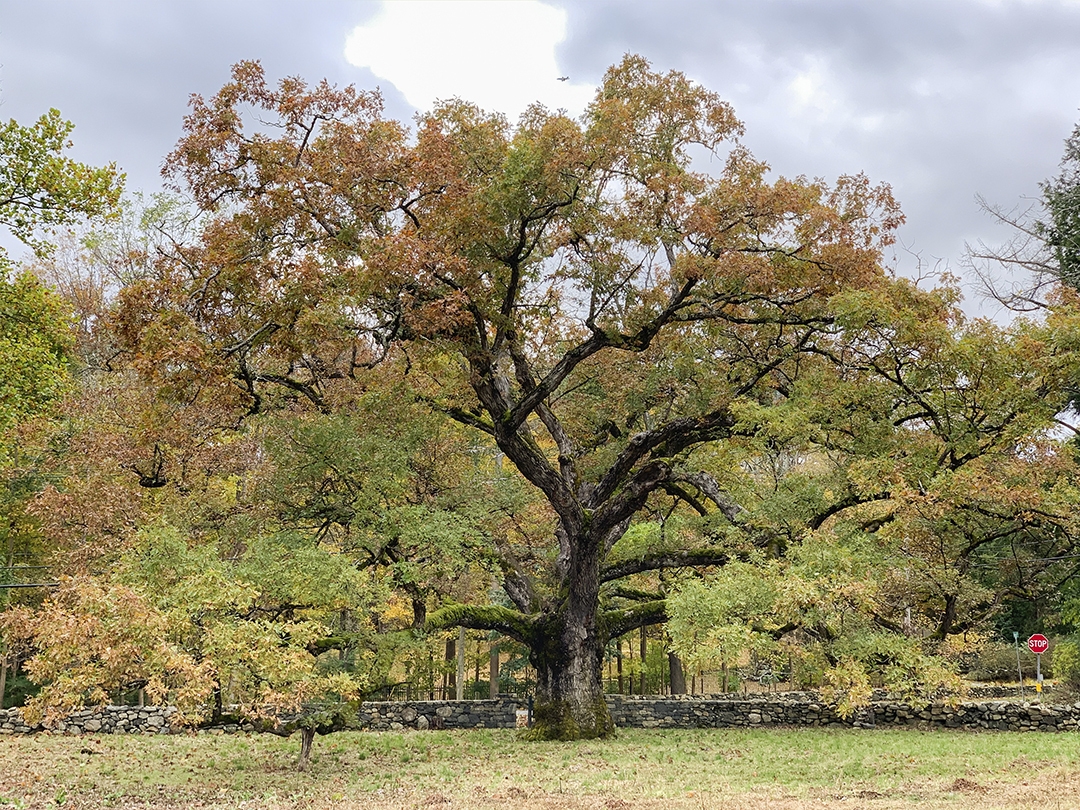Recent weather events in the D.C. region appear to highlight the impacts of climate change, and they’re having an impact on the area’s trees.

This 2019 image provided by Timber Press shows an oak tree in Bedford, N.Y. (Doug Tallamy via AP)

This 2019 image provided by Timber Press shows an oak tree in Bedford, N.Y. (Doug Tallamy via AP)
Recent weather events in the D.C. region appear to highlight the impacts of climate change.
Violent wind and thunderstorms brought down large trees — including one that crushed a car on Connecticut Avenue in D.C.
Flash floods in a Potomac, Maryland, neighborhood stranded a family whose young son stood on the roof of the car as they waited for a water rescue.
Mike Tidwell, executive director of the Chesapeake Climate Action Network, has spent his career warning of the dangers of climate change and has documented its effects by taking a look at the health and climate stresses on trees in his Takoma Park neighborhood.
“The Lost Trees of Willow Avenue” depicts the changing landscape in Takoma Park, Maryland, a community that has won recognition as “Tree City, USA” by the National Arbor Day Foundation.
“Where I live in Takoma Park, Maryland, we’ve seen thousands of old trees die because of global warming,” Tidwell said. “It’s not just me saying it’s climate change, it’s the city arborist and the public works department.”
There are now gaps in the tree canopy in Takoma Park and the region, Tidwell said.
“The Maryland state tree, the regular white oak, is the most vulnerable to rainfall, and we’ve seen them dying in record numbers,” he said.
The stress of climate change combined with the arrival and establishment of invasive species, such as emerald ash borers, ambrosia beetles and spotted lanternflies, are creating a one-two punch that’s taking down trees, according to Tidwell.
But there are strategies that are being employed to help maintain a healthy tree canopy.
Tidwell said Takoma Park officials are looking at different types of oak trees that could adapt to the changing climate.
“The city recommends that people plant swamp white oaks. These are trees literally, who are adapted to swampy conditions and can survive severe rain,” he said. “Post oaks are trees that are evolved to survive drought and floods, so there are oak trees that we can plant.”
Tidwell’s spent years lobbying state, local and federal officials to take action on climate change, including making the switch away from fossil fuels.
He notes that on his block, they’ve lost four trees that are a century or older since 2019.
“Locals can point out the remaining tree stumps that are like tombstones in a graveyard that dot our neighborhood,” Tidwell said. “But you can also see a lot of tree planting that’s happening.”
Tidwell said it’s not all gloom and doom. He said trees are resilient.
“I draw hope from the fact that nature can usually find a way to survive,” he said. “The question is, can human beings survive in an overheated planet where we are becoming stressed by the disappearance of trees?”
Get breaking news and daily headlines delivered to your email inbox by signing up here.
© 2025 WTOP. All Rights Reserved. This website is not intended for users located within the European Economic Area.

